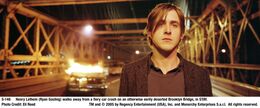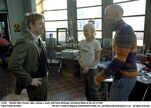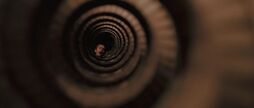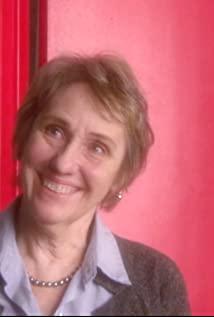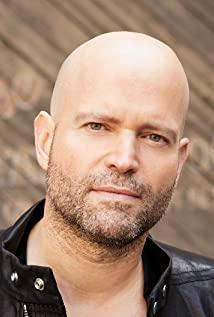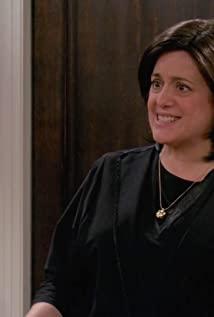dying dream
Regarding the movie "Life and Death", many people said that they could not understand it, so the score was not high. The director opens with a dream of Henry, who was dying after a car accident, and then cuts back to the scene of the car accident in the last few minutes of the film. Because the narrative of the dream dominates the audience, the audience regards the dream as reality. It is difficult to understand once, so this movie needs to be watched more than 2 times. After 2 brushes, I give the director a big compliment.
Rendering of dreams
From the perspective of psychoanalysis theory and practice, the directors of "me" dreams are "me" ourselves, so the director of this dream is Henry, who is also a depressed patient. His dreams would reveal many depressive perspectives and understandings of life and death. Of course, the director will put a lot of details in it, reminding the audience that this is a dream,
For example: at the beginning, Henry left the scene of the car accident sadly unscathed, the camera freezes on his melancholy eyes, and then cuts to the eyes of Sappho (the psychiatrist) after waking up. The two will have a close bond.
In many clips, the voice Henry heard in Sappho's office was actually what Sappho said at the scene of the car accident, and the "reality" background sound played by Henry in the dream was the roar of ambulances and police cars. All of them are revealing to us that Henry is in the midst of dying, with all kinds of noises in his ears, and he is busy producing and interpreting his dreams in order to obtain redemption.
And the final shot, Henry standing in front of the jewelry store glass window with blood dripping from his head, the stagnation of the surroundings (people, cars, lights, etc.), and the silence, all reveal that this is just a dream, a A nightmare that is difficult to break free from (stagnation, predicament).
dream character settings
Livy: As the first car accident witness, Henry was the first psychologist to take over for him, but when Sappho showed up, he comforted appropriately - it wasn't anyone's fault, you don't have to say sorry, let Henry sought out Sappho as his counselor. Obviously, this Livy was shocked by the scene of the car accident, and she declared to passersby that she was the first witness in high spirits, and then excitedly recounted the incident to the police. But, obviously, she was just a passerby watching the fun, and Sappho was paying attention to Henry from the heart. Therefore, Henry set Livy as a weak, passive and decadent character who shirks responsibility in his dream. And set Sappho as a psychiatrist who can help him, and in order to help him sleep and sleep, a psychiatrist who went to great lengths and finally made Henry relieved.
In addition to Sappho and Laila, we will talk about the roles of these two tasks in the dream later. Other passers-by are placed in the dream, and everyone will see them one by one.
The most obvious is that when Sappho and Henry passed by the glass sidewalk, the passers-by around them, although in twos and threes were all in the same clothes and carrying the same bags, the men wore the same clothes, and the three girls wore the same t-shirts. , jeans and a messenger bag, while the professional girl wore the same suit and carried the same tote bag. And in the scene in the gallery, when the lecture was over, the crowd poured out, but we still found a lot of twins, which all revealed that what the film is now showing is not reality, just Henry's dream. In a dream, we may only show the main characters for the sake of the plot. For passers-by, passers-by, passers-by and passers-by can be set up casually. When some people see this, don’t think that the director is stupid enough to ignore the extras. In fact, the director has an accurate grasp of the dream. It is also the director of the dream that deliberately ignores these things.
repetition of words
Henry's language and Lila's language, many of which are repeated, these language in the dream come from the words Henry heard from Sappho and Laila and the surrounding observers before his death. These words are very warm and supportive voices, so comforting for a dying person, so he uses them skillfully in the plot of the dream. For example: "Your troubles will end and luck will smile upon you" "If this is a dream, the whole world is in your dream"
inevitability of misspelling
When the bookstore owner (one of the onlookers) asked Sappho: How long do you think he can last?
Sappho: "What?"
The bookstore owner quickly changed his mind and said: Do you think he can become famous?
This mistake not only reflected that Henry was making a dream, and there must be many flaws in the dream, which was also one of them. It also showed that death was knocking on the door again and again, and Henry did not want to respond for the time being.
Depression treatment experience
In the film (in the dream), Henry went to seek help from a psychiatrist as a depressed patient, but this dream was directed and acted by Henry himself, which showed that the director was quite professional in psychology. For example, the joke with the psychiatrist at the beginning, about whether the banker is delusional or the housewife is delusional, and the famous Freud case - the dream of a boy on fire. Henry's slightly professional jokes and provocations to Sappho in Sappho's office, such as "banker's delusions or housewife's depression, etc." are signs of his psychotherapy. It is this psychological knowledge and experience in psychotherapy that enables him to create a dream of redemption before death. Although there are many loopholes in this dream, of course, these are also one of the characteristics of the dream. But the whole can show Henry's inner world.
In fact, many patients with depression around us have become doctors for a long time. Most of them also understand depression through their own studies. Therefore, Henry's dream has so many psychological elements, and it is these psychological and psychological elements. The medical experience allowed him to complete his own redemption in his last dying dream.
Tristan River - Painter in Dreams
Tristan River, a suicide artist, idolized by Henry, this artist is a portrait of Henry himself, how should he explain all this when he encounters death on the bridge? So he placed in his dream an artist who regarded suicide as a beauty, he painted various bridges, he gave speeches about this artist, and he perfectly and self-consistently revealed the depression patients' perception of suicide. But even with such admiration for such a suicide artist, he still hopes to be rescued from his suicidal obsession. So he arranged for Dr. Sappho to follow him to explore the traces of the artist. While in close contact with this suicide artist, he always arranged for a figure to follow him and pay attention to him. This is Dr. Sappho, which is also The only hope left in his heart.
The conflict and confrontation between life and death finally unfolded, so there was an argument between the two people. When Henry and Sappho played against each other, the camera always used the same background, but changed the positions of the two people back and forth, which is to show that Sappho Fu and Henry's relationship, Henry hoped that Sappho would be deeply involved in his story and lead him out of depression. When the conflict escalated, Henry took out the gun and set it on Sappho's stomach, and the conflict between life and death unfolded fiercely. It was also at this time that Henry said: You are the only one who can help me. Help me like your girlfriend.
And here, we also found that, in fact, the setting for Lyra in the dream is actually the ideal incarnation of Henry. Henry is a painter, and Laila is also a painter. Many small details in the film will reveal that Laila is the incarnation of Henry. He not only hopes to be Sappho's intimate partner, but also hopes to comfort him in time when Sappho is tortured to the point of collapse. encourage. Here, we also understand that patients with depression understand the impact or torture of their illness on the people around them, but they are difficult to control, so their hearts will always comfort those around them who help them.
The Parable of the King and the Farmer
Soon after the opening, Laila and Sappho were chatting downstairs. Laila told the story of the king and the farmer, which was actually a parable of death and the dying:
When (King) Death was hunting, he saw a panicked checkmate (Farmer), and the checkmate (Farmer) shouted: "I am not the prey of elk (Death)", "King (Death) shot and killed the checkmate. The dead man (the farmer), when the stunned guard said: He said he was not an elk (I don't want to die.) The king (the god of death) said: "I thought he said he was an elk" (I wanted to die).
If the director of the whole dream is Henry, then the creator of this story is also Henry. In the mental world of Henry, a depressed patient, there is always a reason for death, and death is always by his side, and it is difficult to get rid of it. They can't keep Death away from them, whether by changing their appearance or emphasizing their words, just like the prey that Death is always chasing.
Attribution of depression: We know from the end that Henry's car accident was actually just because of an accident, the front tire punctured, resulting in the car accident, and both parents and girlfriend were killed. Before he died, he had deep self-blame and guilt. Of course, when something like this happened, most people would feel self-blame and guilt, but he would not feel like Henry that he would definitely go to hell, so he always said: "I'm doing the next thing. Preparation before hell" I'll go to hell and so on. Objectively speaking, this was an accident. Even when Sappho heard him say forgive me, he immediately came to clarify and alleviate his wrong attribution, but Henry still couldn't forgive himself. forgive me", and the guilt and remorse almost engulfed him. all stem from this attribution. Therefore, Henry shows through his dreams how a depressed person understands, attributes, and chooses about accidents and the world in which he lives.
He even showed a detail that was not obvious. In the dream, Henry never drove again, either on foot, or by subway or bus. This also reflected that he was unconsciously afraid of driving, and the fear of cars also became a reality. a trauma.
Depressed love
Henry's girlfriend is a beautiful coffee shop waiter, but she has a wide range of hobbies, drama, ballet and so on. From his acquaintance with his girlfriend, we can see that he knows that every time his girlfriend greets him is polite and professional, but he can also feel the warmth in this social greeting. A sensitive and depressed freshman, love slowly grows out of this tiny warmth. And this kind of love will become an important support for Henry for the rest of his life after all. Of course, losing this support would also be a fatal blow to Henry. But everything came at the moment of the car accident, so that the prepared ring could not be given out. He would be harvested by the god of death, and the ring would not belong to him, so in the dream, the ring was also placed in the dream and appeared frequently. It seemed that the ring was the only evidence his love had ever existed.
hamlet plot
Hamlet is undoubtedly a tragedy, and Henry hides this tragedy looming in the whole dream. He probably thought he was Hamlet, and because of his mistakes, he killed his parents and killed his lover (Ophelia). And also set "Hamlet" as Athena's rehearsal repertoire, where Henry spoke Hamlet's classic lines through Athena's mouth. The question of "Hamlet" has always been life or death? This is also a question often considered by depressed people. Hamlet's soul questioned, like the ghost of his father, who appeared again and again in Henry's world. Even when Henry went to his father, what his father used for self-defense turned out to be a sword, and even the props in the play were dazzled in the movie once. If a technique often used in movies is a play within a play, then the director used the play "Hamlet" in the movie. As a depressed patient, Henry may identify with the image of Hamlet in his heart, and therefore, the flash of Hamlet's plot is like another hidden parallel line.
If, from a psychoanalytic point of view, neurotics are trapped in Oedipus plots, it may be said that depressive patients are trapped in Hamlet plots.
Voiceover, Epilogue: I wish we could do more
Sappho and Laila, one is a psychiatrist and the other is a nurse, both serve as messengers to protect the body and mind of human beings. In the face of the struggle and self-blame of a dying man, the regrets pouring out of his heart are beyond words. Therefore, in Henry's dream, Sappho, as a psychiatrist, is not at all sophisticated and calm compared to Henry, but has a look of anxiety and depression. Of course, this is the impression Sappho left Henry. Facing Henry's tragedy , Sappho, as a passerby, is very worried and sad and regretful. So Henry must have felt this anxiety about him, so he set Sappho as a savior. As for Laila, the nurse, she is beautiful and kind, Henry projected his ideal - becoming a painter, on Laila, Laila is the embodiment of her ideal, which is also revealed in the film, but Sappho When eating with Laila, Laila said casually: "I wish they could remember me." Sappho asked: "What?" Laila changed her words: "This world" This dialogue clearly stated that Henry, when faced with death, wanted to To say it, he hopes the world can remember him coming. Although Laila is also a painter who attempted suicide, she was strong out of depression and said that "there is always some beauty in life that is hard to let go", which is Henry's ideal incarnation - a successful and successful out of depression painter.
Dreams, Cinema and Psychoanalysis
I have always believed that movies are the most realistic art form that can express dreams, and dreams are the most important field of psychoanalytic work, and also an important field of a person's unconscious activities is dream. This film fully shows the mechanism, operational elements and states of dreams in front of people. Of course, the mechanism of dream operation is an important field of psychoanalysis research, and what dreams reveal is closely related to psychoanalysis.
The focus of the film itself, the flexible expression of the film, etc. are all closely related to the unconscious manifestations that psychoanalysis focuses on. However, the theoretical system and complexity of psychoanalysis require long-term and systematic study, and most of them are relatively It is obscure, but the film is very intuitive. It is a work that can be watched, copied, and extracted repeatedly, or it is a specimen, a model, or a case by case in the language of psychoanalysis. In a sense, movies, dreams, slips of the tongue, and clerical errors are all a channel of human unconsciousness. Many psychoanalysts believe that dreams are the channel leading to the unconscious, and some psychoanalysts have specially developed courses on this topic. From my personal psychoanalytic experience, movies also have similar functions to dreams. Movies are like a dojo.
Going back to the movie itself, the director is using a deceased's dream of redemption to interpret the inner world of a depressed patient. If you use psychoanalytic terms to describe the perspective of depression, of course not, but compared to the movie, people's acceptance It's very narrow. So, this movie is brilliant from a psychoanalytic point of view.
View more about Stay reviews



